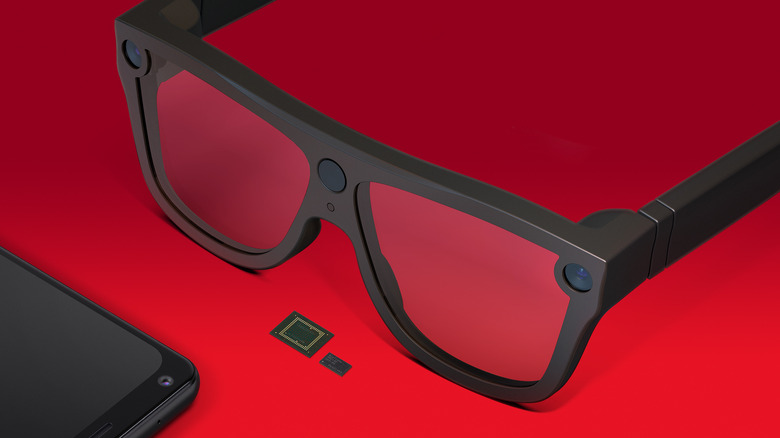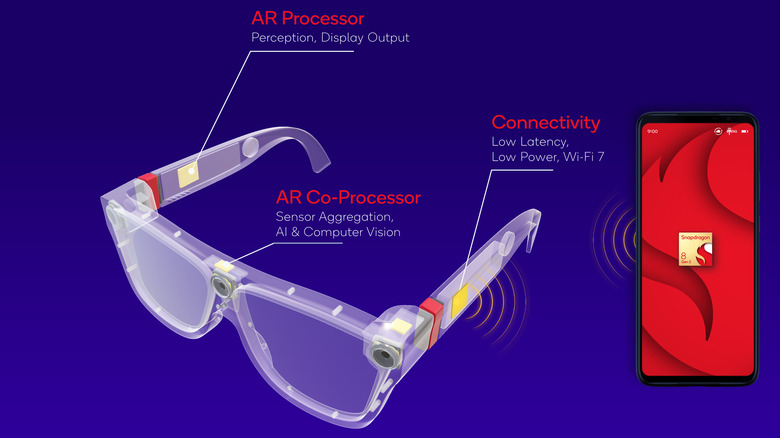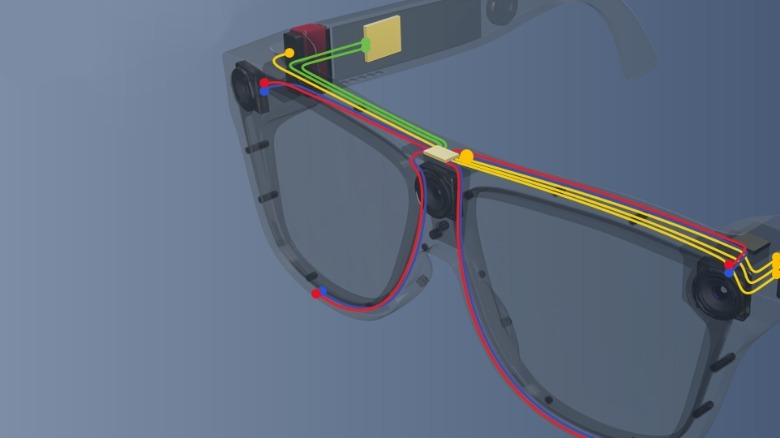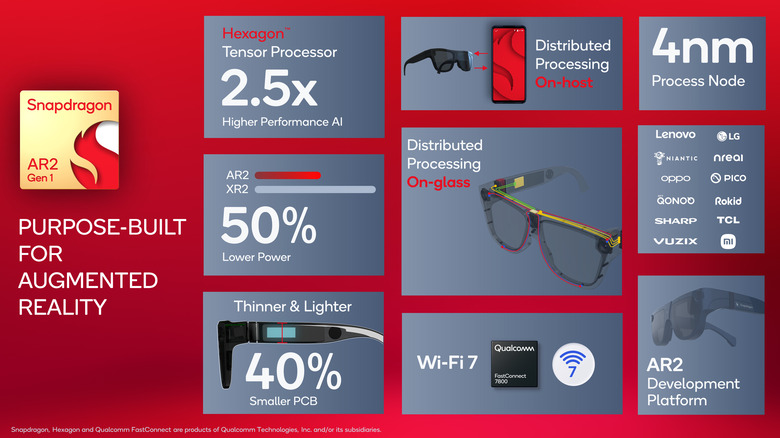Qualcomm Is Finally Getting Serious About Non-Dorky Smart Glasses
Qualcomm isn't new to mixed reality, but the chip-maker chose to focus on augmented reality (AR) as the push for true smart glasses continues. Announced today, the Snapdragon AR2 Gen 1 Platform is its first, purpose-built AR platform, intended to squeeze neatly into a pair of glasses that don't look like a 2000's sci-fi movie prop. By splitting the hardware into three and leaving a wirelessly-connected phone to do much of the heavy lifting, Qualcomm is confident its new platform is ready for daily wear.
That's certainly not something you could say about a lot of the "AR glasses" projects and products we've seen in recent years. Previous iterations of those have run on Qualcomm's own chipsets, like Lenovo's Smart Glasses T1, but they've been fairly clunky and relied on a wired link with a smartphone or computer. A wireless version followed earlier in 2022, but it was still based on the Snapdragon XR2 Platform that the company also offers for virtual reality (VR) headsets.
The other reality worth paying attention to is that AR and VR are in fact very different animals. While you might be happy immersing yourself in a virtual reality world for an hour at a time, the point of augmented reality is that it's adding to the real world around you for far longer periods. That means you need longer battery life, without sacrificing precise sensors for the ability to map virtual objects and graphics onto the physical environment.
Splitting the platform to improve wearability
Enter, then, the Snapdragon AR Gen 1 Platform. Part of Qualcomm's Extended Reality portfolio, it's designed to be super-frugal as well as super-slim. Enough, in fact, to fit inside an almost-mainstream pair of glasses.
That's easier said than done. To achieve it, Qualcomm split its new platform into three. The main AR processor is in one arm of the frame, responsible for things like running the displays and aggregating video from up to 9 cameras. It's 40% smaller than the Snapdragon XR2 in the Wireless AR Smart Viewer Reference Design, and Qualcomm says it packs 2.5x the AI performance despite using half the power.
Then there's an AI Coprocessor, which is mounted in the bridge of the glasses. It pulls together the camera and sensor data, uses iris authentication for security, and handles eye tracking. The latter can be used for foveate rendering: maximizing the resolution of the digital graphics only where the wearer is actually looking, to save on power consumption.
Finally, there's a connectivity module in the other arm. That uses the FastConnect 7800 system for Wi-Fi 7, which forms the basis of the link between the smart glasses and a host device such as a smartphone. With under 2ms latency, the onboard chips can do early processing of things like 6DOF and camera-based positioning, pass that to the app running on a smartphone, and then render what's transferred back for the wearer to see.
Less heat, less power consumption, and longer usability
The result, Qualcomm says, is a dramatic cut in power and heat. There are 45% fewer wires, and by distributing the various components of the Snapdragon AR Gen 1 Platform around the frame it makes for a better balanced wearable as well as one that avoids uncomfortable hotspots. Total target power consumption is under 1 watt — albeit not including the displays themselves — around 50% of what the previous platform could do.
That's not to say functionality has been cut. In fact, Qualcomm has included things like a dedicated Engine for Visual Analytics and a Reprojection Engine, which is used to recognize real-world objects and details, and smooth the anchoring of virtual objects in among them. That way, even if you move your head quickly, you shouldn't get visual smearing or AR graphics that jump around or have to play catch up.
As with all of its reference designs, Qualcomm isn't planning to launch its own smart glasses; instead, they're intended to give its OEM partners a head-start as they build commercial products. So far, Lenovo, LG, Niantic, Nreal, OPPO, Pico, Sharp, TCL, Vuzix, and Mi are all onboard with the new platform, with the AR2 in "various stages of development" as AR smart glasses you can buy get another step closer to launch.



